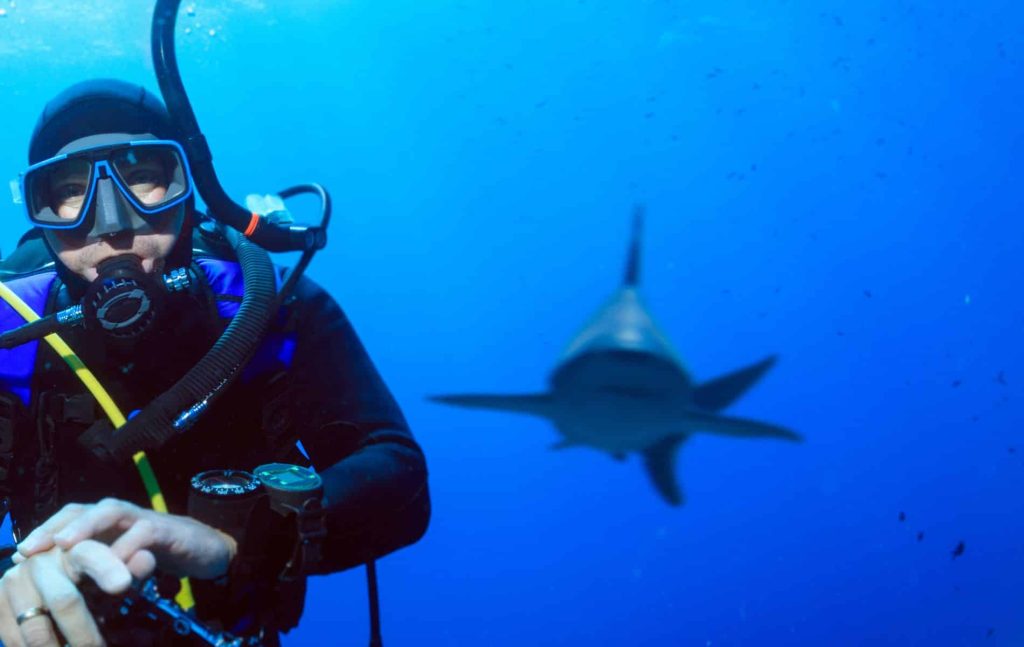The waterproof electronic glove makes it easier for divers to communicate underwater. Not only with each other, but also with people on the mainland.
Underwater communication is very difficult for hearing people. There are tricks to get the other person's attention by tapping the oxygen tank with a pebble or metal bar, and there are also whiteboards that work underwater. But most underwater communication is done through hand movements. Ideal for communicating over longer distances and without disturbing marine life. But if the view is not clear, or you want to get something to your ship, this method will fail.
To remedy this, Chinese researchers have developed a compact electronic glove that wirelessly transmits hand gestures to a computer that translates these messages. The new technology could help future divers communicate better with each other and with people on the surface. The latter is especially important when something goes wrong underwater. For example, getting caught in a strong current, or when divers get lost in cave systems, something that can happen to even the most experienced cave divers.
What are you referring to underwater?
To begin with, there are practical gestures, such as asking how much oxygen the other person has left, to indicate that you are having difficulty cleaning your ears or that you should stop diving. But there are also gestures to draw each other's attention to underwater creatures. Do you see a shark? Then you put your hand on your head like a flipper. Unless it's a hammerhead shark, place two fists on either side of your head. With mantas, you flap your arms as if you were flying, and with jellyfish you move your hand while opening and closing your fingers like tentacles. For example, there is a real sign dictionary for underwater communication.
Learn words
For their prototype, the researchers sewed ten waterproof sensors over the knuckles of the glove's fingers and index fingers. These sensors, about the size of a USB-C port, detect and respond when you bend. Then it's time to teach the mitten some vocabulary. To do this, a participant made 16 hand gestures while wearing gloves. The researchers then associated each gesture with the corresponding specific electronic signals. In this way, the computer program learned to translate sign language into words. The researchers tested this above and under water. In both cases, the computer was able to provide a good translation in 99.8% of the cases.
Water leak
The electronic glove uses the same principle as previous designs, allowing the wearer to interact with virtual reality environments and helping people recovering from a stroke regain their fine motor skills (see box). To make this technology suitable for divers, this team focused specifically on making the electronic sensors waterproof. This turned out to be a difficult task. The glove should be flexible and comfortable at the same time.
To achieve this, the researchers used waterproof sensors made up of flexible microscopic columns, inspired by the tube feet of starfish. Using laser scribers, they were able to deposit an array of these micropillars onto a thin layer of polydimethylsiloxane (PDMS), a waterproof plastic commonly used in contact lenses. After covering this PDMS matrix with a conductive layer of silver, the researchers were able to place two films together with the pillars facing inward, creating a waterproof sensor. The researchers are satisfied with the final result. “The system has tremendous potential for a wide range of applications in underwater communications.”
As mentioned, the diver's glove is not the first smart technology to use sensors to communicate more easily. Earlier this year, researchers from the University of Southampton and Imperial College London announced that they had developed a glove that uses sensors and electrical stimulation to help stroke patients improve the function of their hands. But these are not the only possible jobs. Associate computer engineer Peyman Servati also sees other applications for the glove. In virtual reality and augmented reality, for example, or in animation and robotics. “Imagine being able to precisely capture hand movements and interactions with objects and automatically display them on screen. Then, you can type texts without needing a physical keyboard, control robots, or translate sign language into written speech in real time. The applications are endless.” “

“Lifelong entrepreneur. Total writer. Internet ninja. Analyst. Friendly music enthusiast.”











More Stories
iPhone SE 4: Bigger screen and Face ID according to new rumors
Belgian co-production with acclaimed actor Crispin Glover selected for Toronto Film Festival
Helldivers 2 Escalation of Freedom update will be released on August 6